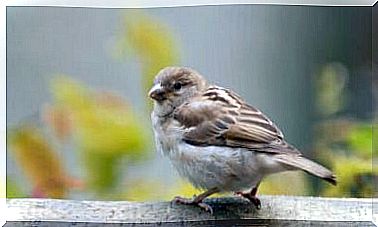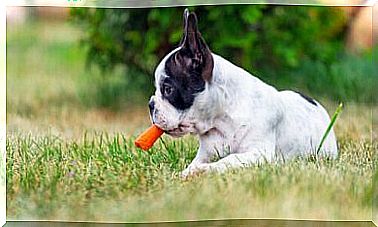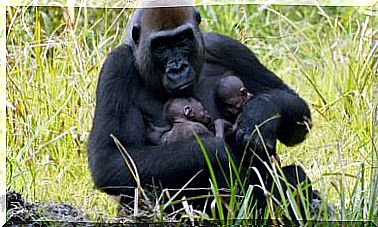The 5 Smallest Primates In The World
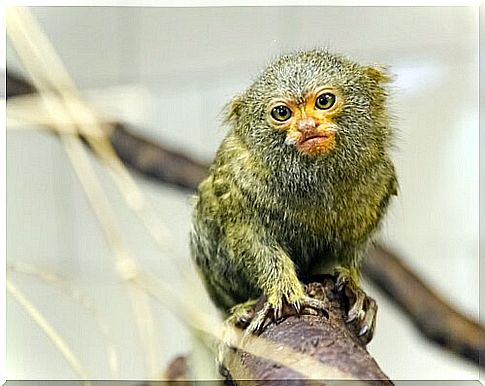
On the one hand there are the great apes such as the gorilla or the orangutan, on the other the smallest primates in the world, but which still belong to the same family. Even if they do not have an impressive height, they can still count on a strong personality. Would you like to know what they are? Then don’t miss this article.
What are the smallest primates in the world?
Within the order of primates – the same as in humans – there are species of different sizes, weights and habits. Although the chimpanzee, gorilla, or orangutan are better known, there are others that are much smaller but just as unique and interesting. So let’s see five examples of these living beings that are really worth discovering:
1. Pygmy marmoset
The so-called “pocket monkey” – visible in the photo that opens this article – is the smallest species of primate known to us. It lives in the tropical forests and jungles of central and northern South America, specifically in those places near the waterways of the Amazon.
It is an omnivorous animal (it feeds on fruit, insects and absorbs life sap from trees), lives in groups of up to eight specimens and the family is led by a couple of adults, who rule over the others and younger members. It has diurnal habits and stays awake in the morning and before sunset .
2. Uistitì with white plumes
Its scientific name is Callithrix jacchus , and it is another of the smallest primates that exist. It is an endemic species of the Brazilian forest and measures between 18 and 25 centimeters in length. Its tail can be longer than the body, about 35 centimeters. In addition, it features gray and black fur with thick white “hair” on the sides. White is also the forehead, cheeks and chin.
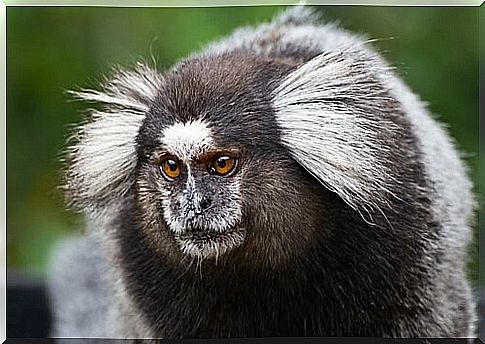
This monkey lives in groups of up to 20 individuals – which are very territorial – and unlike others in their family, they form monogamous pairs that will last a lifetime. The female can procreate up to twice a year and with litters of up to three offspring.
3. Great lion ape
Also known as leontocebo rosalia ( Leontopithecus rosalia ) is another of the smallest primate species in the world and lives in Brazil, precisely southwest of Rio de Janeiro. Most of the specimens are kept protected within nature reserves, while the rest of the population – about 500 specimens – live in captivity.
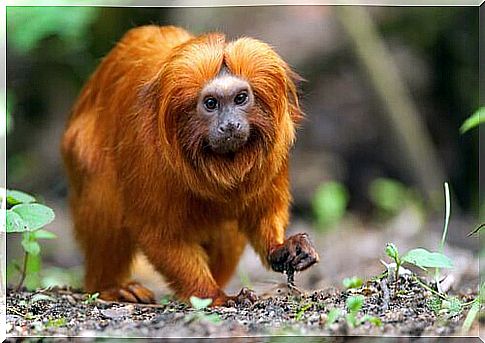
It is the size of a squirrel: it can measure between 34 and 40 centimeters and the tail is as long as the body. It owes its name to the mane that grows on the sides of the face – devoid of hair – and the hue of its fur, as you can easily see from the photo above.
It feeds on fruits, frogs, flowers, lizards, insects, nectar and molluscs. This small primate is also monogamous, forming territorial groups of up to 14 individuals led by a dominant couple and, although the females take care of the offspring at birth, the males collaborate in the rearing of the young.
4. Tarsier spectrum
Within the genus Tarsius , all its members are very small. Also called elf maki ( Tarsius tarsier ), it measures no more than 26 centimeters and its prehensile tail is very long. It has nocturnal habits, lives in small groups of up to 6 individuals and can be both monogamous and polygamous.
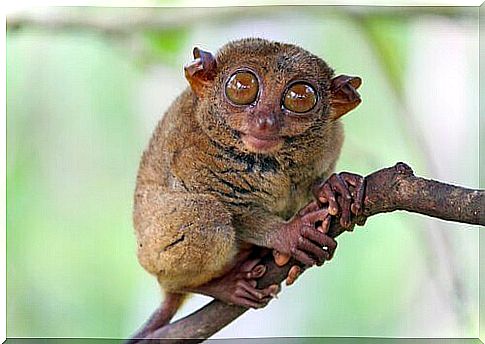
The spectrum tarsier inhabits dense forests, including mangroves, bamboos, bushes and tall grass, and in any tropical place with many trees, as it rarely comes down to the ground. It feeds on insects, rodents and small reptiles and is the mammal with the largest eyes in relation to its size.
5. Cinopiteco
The Macaca genus is one of the largest among the primates and, in the case of this Macaca nigra , it is among the smallest. The cynopithecus lives in the jungles of Indonesia and is in serious danger of extinction.
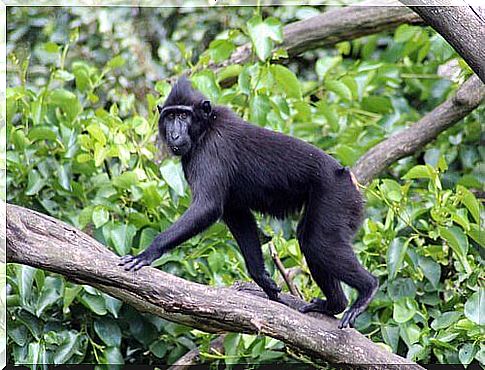
It measures no more than 50 centimeters and, as the name suggests, is completely black in color. It has long fur as if it were a “crest” and has a very long muzzle. It maintains diurnal characteristics and feeds mainly on fruit.

